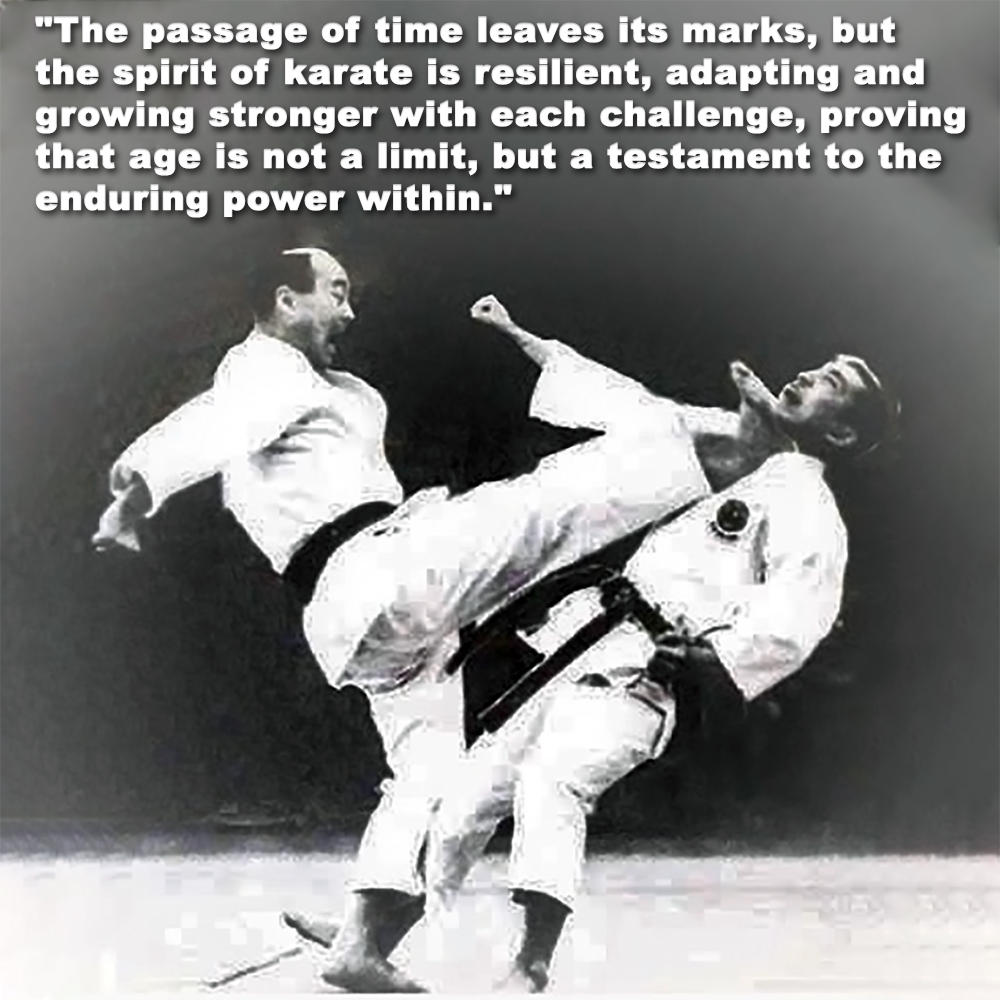
“The passage of time leaves its marks, but the spirit of karate is resilient, adapting and growing stronger with each challenge, proving that age is not a limit, but a testament to the enduring power within.”
Posted by ADAM CARTER on NOV 19, 2023

“The passage of time leaves its marks, but the spirit of karate is resilient, adapting and growing stronger with each challenge, proving that age is not a limit, but a testament to the enduring power within.”
The martial arts, with its rigorous training and physical demands, often fosters a culture of resilience and perseverance. How many times have you been told to ignore the pain, fight on, never give up?
Practitioners are often taught to push through pain, to persevere in the face of discomfort, and to cultivate mental toughness. While this mentality is essential for growth and development, it can inadvertently lead to the neglect of injuries.
Young practitioners, driven by passion and a desire to excel, may ignore warning signs from their bodies. Dismissing injuries as mere obstacles to be overcome, (I know I did when I was younger and competing regularly), rather than signals that demand attention and care.
In the fervor of youth, many of us succumbed to a sense of invincibility. Ignoring injuries became a testament to one's dedication and toughness.
But the consequences of such neglect are often deferred into the distant future. As the years pass, these once-overlooked injuries can resurface, exacting a toll on the body's resilience and compromising one's ability to perform optimally.
Injuries that were brushed aside in the past may manifest as chronic pain, reduced mobility, or compromised joint integrity in later age. The very techniques and strategies that were once executed with precision and speed may now be hindered by the ghosts of injuries past.
This delayed onset of consequences underscores the importance of acknowledging and addressing injuries promptly, as the price of neglect tends to increase exponentially over time.
Yes I know, I’m sounding like an old man to the younger among you (I am). But the impact of previously ignored injuries can be profound. The physical limitations resulting from past neglect may impede swift and decisive actions, potentially compromising your ability to effectively defend yourselves.
Whether it be diminished speed, compromised balance, or chronic pain, these lingering consequences can create vulnerabilities that adversaries may exploit.
The risk of injury is inherent in any physical activity, and martial arts is no exception. As we age, our bodies may become more prone to injuries, such as strains, sprains, and fractures.
The cumulative impact of years of training and wear on joints and muscles may further exacerbate the likelihood of injuries during a real world self-defense encounter. Therefore, a delicate balance must be struck between maintaining physical fitness and adopting practices that reduce the risk of injury.
Those of you that are interested in the martial arts for some resemblance to self-protection but are taught only how to fight, may have to consider this.
Cultivating tactical awareness becomes increasingly vital. Being able to anticipate and de-escalate potential threats can be more effective than relying solely on physical prowess.
By honing your situational awareness, you can preemptively avoid confrontations or navigate them strategically, minimizing the need for intense physical engagement. This shift towards a more strategic mindset not only enhances self-defense capabilities but also reduces the risk of injury.
To be fully fit for real-life self-defense situations in later age, martial artists must confront and address the specters of neglected injuries, adopting a holistic approach to training that prioritizes longevity, well-being, and adaptability. Only then can you hope to face the challenges of self-defense with the strength and agility needed to protect yourself effectively.
“The passage of time leaves its marks, but the spirit of karate is resilient, adapting and growing stronger with each challenge, proving that age is not a limit, but a testament to the enduring power within.”
